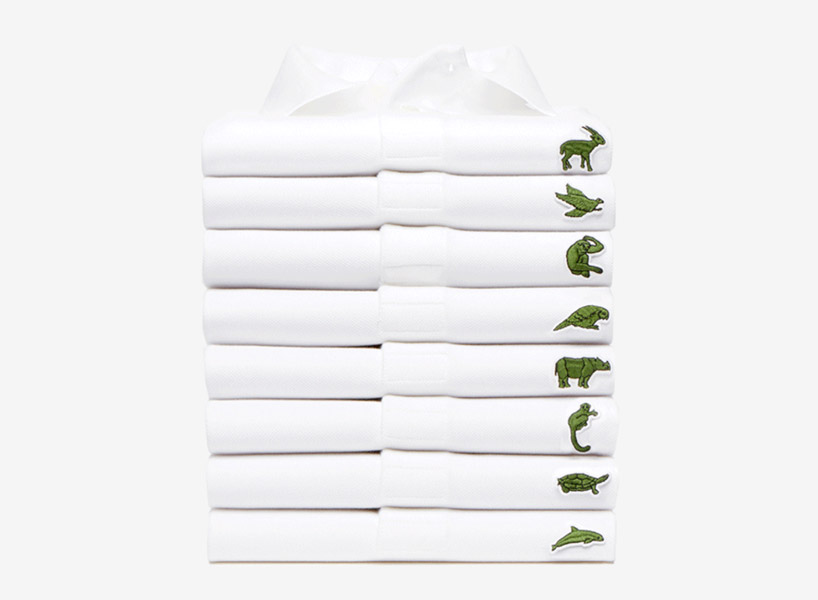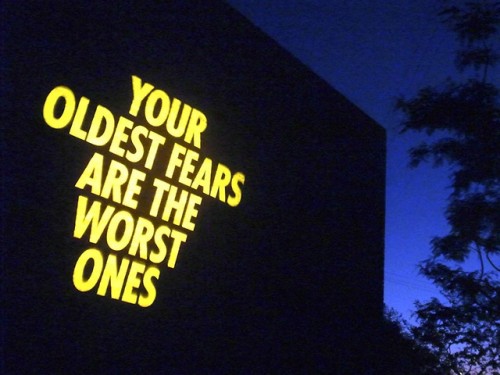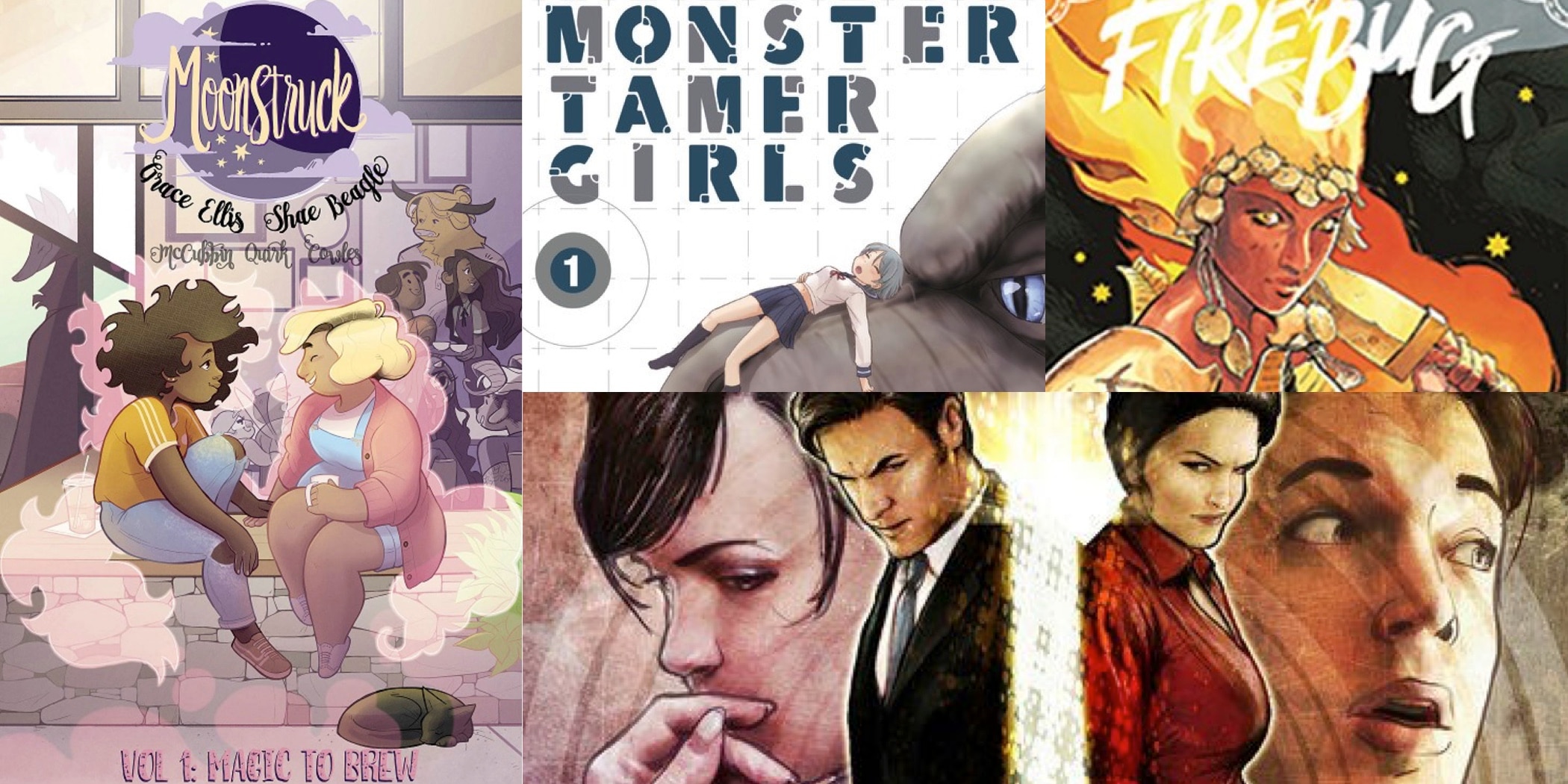If you’re not a fan of reading in issues, then comic trades can be your best friend. Sure, some people love the feeling of going to a comics shop and picking up a stack of floppies each week. Others love collecting digital issues from Comixology. But if you’re like me, the bites of story you get from reading individual issues aren’t quite satisfying enough. I got to the point where I was saving up comics until I had four or five issues to read at a time, and that was when I realized I should just start reading in trades.
lacoste changes its logo in aid of 10 endangered species

lacoste has created and already SOLD OUT a limited collection of white polo shirts, which, instead of the iconic crocodile logo, shows 10 endangered species.
The post lacoste changes its logo in aid of 10 endangered species appeared first on designboom | architecture & design magazine.
Traxxas TRX-4 Ford Bronco
Private View: Jenny Holzer at Blenheim PalaceA gallery of the…

Private View: Jenny Holzer at Blenheim Palace
A gallery of the work of American conceptual artist Jenny Holzer, marking the premiere of a new film about her work on NOWNESS
One Artist’s Mission to Illustrate All the World’s Mythical Beasts
Every culture has its own distinctive mythological beasts. In Brazil, there’s the Headless Mule, a cursed creature whose decapitated head hovers above a fire-spewing neck as it gallops across the country. From Japan, the Kotobuki is a Zodiac Frankenstein’s monster: it consists of all 12 signs, from the nose of the rat to the tail of the snake. Peru has the Huayramama, which looks like a vast snake plus the billowing hair and face of an old woman.
With such rich and broad source material to draw from, the artist Iman Joy El Shami-Mader has lately been pursuing one very particular goal: she wants to illustrate as many mythical beasts as she can find. Since October 2017, El Shami-Mader has been illustrating one such creature a day, which she then features on her Instagram account. To keep up a steady supply of beasts to draw, El Shami-Mader initially worked from books. “It all started with the book Phantasmagoria—which is great—but there are many creatures that are only mentioned in passing or without any description at all,” she says. So she ordered more books, researched online, and tried her local library. “I’m from a tiny town in the Alps, so other than local creatures, there was little to be found.”

Lately she’s decided to try to crowdsource ideas to keep her project going. Through Instagram, she’s asked her followers to send stories and descriptions of mythical beasts she’s still missing. Her illustrated bestiary now spans mythologies from around the world and across a variety of time periods, and even includes the odd fictional character (she has a porg from Star Wars: The Last Jedi and an Owlbear from Dungeons & Dragons).
Atlas Obscura spoke with El Shami-Mader about her project, the challenges of depicting mythical creatures, and the appeal of the lovable Squonk. If you’d like to suggest a creature, email her at [email protected].
Where did the idea for this project come from?
It actually started as a stress-relief strategy and ‘self-challenge’ last fall. I was working five jobs and felt extremely drained and worn-out all the time. I really needed something to balance out the lack of creative expression I was feeling and to get my mind off things, at least for an hour a day.
A few years back I did a series of fairytale illustrations and came across many amazing creatures, like the Bøyg in Per Gynt. Since I always wanted to deepen my knowledge about these creatures, I ordered the book Phantasmagoria by Terry Beverton and it arrived on my doorstep on September 30, just in time for me to begin a daily monster-drawing challenge I’d set myself for the month of October. I started to use my lunch breaks to have a quick snack and do a drawing of a creature each day. I was fairly sure I would give up after a week, but it really helped with the stress; for an hour or two each day, all that was on my mind was bringing a creature to paper, nothing else. It was also great to learn about a new monster each day, so when October was over, I didn’t really want to stop.

Why mythical creatures?
I am generally a history buff and I love fairytales, sagas, myths and legends. In this already pretty epic realm, these beasts feel even more magical. I find them extremely interesting for so many reasons. They can give you an incredible insight to different cultures—what people were afraid of, and what simply was inexplicable at the time and needed to be put into a physical form. I feel like they also show humanity’s need to have a reason for both good and bad things happening. Sometimes they are a ray of hope, the only thing able to cure an incurable illness; other times they bring plagues and death. They are wise helpful spirits, and they are malicious tricksters. It can also be really funny—you can tell that some only exist because of the bad descriptions the scholars wrote down.

Tell us a little bit about how you research and plan how these illustrations will look.
When someone tells me about a new beast, I still try to do as much research as possible and find the best description available, either on the internet or by asking more people from that region about their version of it. Sometimes the descriptions are very detailed, which makes it easy to come up with a general idea of how proportions and form should be; other times it just says "aquatic creature" or that it has "serpentine appearance," which makes it harder on one hand, because you cannot depict them "accurately" (as far as drawing a mythical creature can be, anyway), but on the other hand really lets your imagination run wild. I usually have an image in my head of how I’d like it to look. I start by slowly sketching out the first lines in pencil, then elaborate them a bit, and when I’m happy enough with the results I start tracing my pencil drawing with ink pens.


What’s the goal of this project?
Well, I’ve ‘tasted blood’ now, and am on a mission: I would love to create a complete illustrated bestiary. There are many great books on creatures out there, but so far I haven’t found a complete one. I know this is a Sisyphean task, but I’m motivated. I’d love to turn my findings into a book, or—even better—a series of books that can be continually expanded. For now there is only an idea, but a friend of mine is a composer and we were thinking of collaborating on a trilingual ‘monsters set to music’ book. My current priority, however, is finding as many mythical creatures as possible.

Tell us about your favorite mythical creatures in this project.
That is really hard to answer—they are all so unique. I love the Dijiang, because I feel it’s my spirit animal (living in a perpetual state of confusion, but fond of singing and dancing). I love the idea of a Valravne eating a king’s heart and thus gaining human knowledge and becoming evil (eating another human’s flesh was really thought to give you his strength at some point in history!). I think it’s amazing that the Chouyu falls asleep when it sees people, and that the Ovinnik holds a grudge against barns, but is appeased by pancakes.
But if I had to choose a favorite one, it would have to be the Squonk, a creature from the forests of Pennsylvania, who was always sad over its hideous appearance. All the love for the Squonk!





A rainbow staircase bringing energy to a rural neighbourhood in…

A rainbow staircase bringing energy to a rural neighbourhood in #Peru – who wouldn’t want this in their community?! 🌈 😍 ⠀
– ⠀
Piece by @xomatok 😊 ✌️ ⠀
–⠀ #globalstreetart #rainbow #rainbows #streetart #art #urbanart #mural #murals #outdoorart #graffiti #streetartistry #streetarteverywhere https://www.instagram.com/p/BfeOv1JFly_/
A Closer Look at All Moncler Genius Collaborations

Moncler x Pierpaolo Piccioli
Valentino creative director Pierpaolo Piccioli introduced her sculptural range of column-like coats and cropped jackets, with hooded models recalling the sheltered women of The Handmaid’s Tale. Stark colorblocking grants the precise layers an even more striking appearance, with Moncler’s famed puffer shapes contorted into austere gowns, shapely gloves and restrictive vests. Architectural touches inform the esoteric designs, like capes that wrap around the body, in the vein of early 20th century red carpet gowns.
Moncler 1952
Stylist Karl Templer handles the slouchy, shiny Moncler 1952. Templer’s designs center around loose trousers and a host of colorful, expanded puffer jackets and vests. The retro vibes are solidified by an array of sweaters and quarter-zip intarsia knits accented by sporty stripes and old-school Moncler logos. An assortment of cartoony imagery appears on colorful sweaters, while a variety of fur outerwear and accessories elevates the looks beyond youthfulness.
Moncler Grenoble
The anonymous, in-house design team behind Moncler Grenoble returned to its retro-leaning roots with flared trousers and floral patters, complemented by furry hoodies and velvet iterations of the iconic puffer jackets. Shaggy shoes inform the comfy styling, which sees psychedelic-patterned zip jackets layered over other visually-busy trousers and shirts, topping the looks off with branded headbands and camouflaged floral goggles.
Moncler x Simone Rocha
Popular womenswear designer Simone Rocha delivered a moody collection for her debut range, juxtaposing a host of all-black looks with elegantly draped white and red looks. Textured gowns and lightweight tulle related to the muted floral detailing, adding a feminine edge to floral dresses. Layers of puffers were bolstered by strapped pouches and clutch bags, with fur-trimmed jackets tying in with heeled boots dotted with patches of hair. Tonal sequin detailing appears on gloves and around the Moncler logo, with bespoke bug-eyed sunglasses tying it all together.
Moncler x Craig Green
Unrelated to his ongoing Moncler C line, Craig Green issues a new collection for Moncler Genius. In line with his earlier collections that recalled organic samurai, Green’s latest Moncler creations feature body-distorting duvet-like coats, replete with bloated bag attachments and dangling straps. Executed in black and white — with and without pinstripes — the looks incorporate a host of complicated layers, with bags seamlessly blended into the creations.
Moncler x Noir Kei Ninomiya
One of the brightest stars under the COMME des GARÇONS umbrella, Kei Ninomiya has delivered technically stunning lines under his Noir label for a few years now. The same expertise is applied to his Moncler line, which ranges from jaw-droopingly intricate laser-cut sweaters and vests to Moncler’s familiar puffer layers accented by quilted detailing. True to the brand’s name, the items are all black, placing the focus on the crinkly, creased textures.
Moncler x fragment design
fragment design mastermind Hiroshi Fujiwara takes on a full range of wearables for his Moncler collaboration. Casualwear staples like sweaters, balmacaan coats and M65 jackets all appear, along with a generous portion of heavily-branded outerwear, ranging from coats emblazoned with “BACKSTAGE” to co-branding accented by a shout out to the cardinal directions. Bold reds and blues are elevated with the fragment logo, and plaid shirts are subverted with puffer fabrics, granting them an unconventional, ribbed shape.
Moncler x Palm Angels
Initially teasing the collaboration on Instagram only days ago, Francesco Ragazzi’s full Moncler Genius range is entirely informed by Palm Angels’ sensibilities. Comfy red hoodies and track pants offer Palm Angels branding and “IM SO HIGH” verbiage, with the stark red also appearing on a range of puffer vests and jackets. The full range even extends to branded socks, cropped hoodies, track jackets and drawstring puffer bags. Tonal sunglasses and berets complete the expansive selection.
Click here to view full gallery at HYPEBEAST
Textile Bodies Reveal Branched Systems of Veins, Flowers and Roots by Raija Jokinen
Finnish artist Raija Jokinen creates sculptural bodies out of flax which attempt to reveal the complicated relationship between the mind and body. Webs of flowers, veins, and roots cover her textile torsos, shape-shifting between plant and human forms. Jokinen invites the audience to get lost in these visual similarities, as she makes no distinction between whether the pieces are actually nerves or sprouting tree branches.
“It is fascinating how body-related details, such as skin, blood vessels, and nerve tracks resemble the forms of roots or branches, as well as many other organic things,” Jokinen told Colossal. More
Gargantuan Felt Masks of Beautifully Disturbing Characters by Paolo Del Toro
Artist Paolo Del Toro uses needle felting to create massive masks and sculptures using wool and foam. His creations depict mythical faces in expressions that range from grotesque grimaces to contemplative introspection; all of his works feature open mouths. While Del Toro’s work is not tied to any particular cultural visual heritage, the shifting personalities of his characters are reminiscent of Japanese Noh theater masks, which are designed to show different emotions from different angles. More
Tom Hardy got a stupid Leonardo DiCaprio tattoo because he lost a bet
A bet that dates back to The Revenant finally pays off in all its ridiculous glory.
Kid Gets Instant Karma after Peeing on Elevator Buttons
You know urine trouble when you do something wrong on so many levels.
Gorgeous indie comedy game Chuchel is out in early March
View Signal Source

